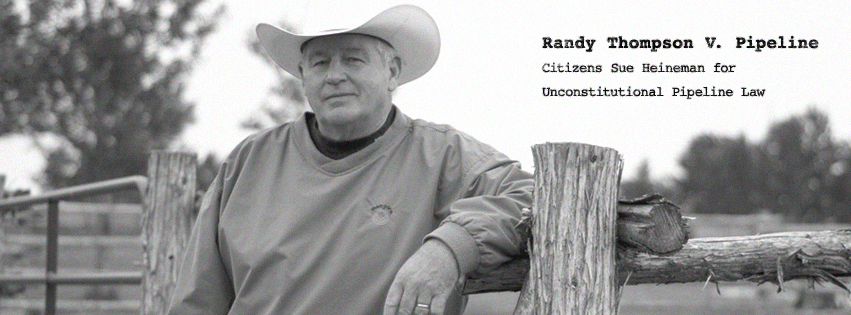To: Reporters Following Keystone XL
From: Jane Kleeb and Kenny Bruno
Date: May 6, 2014
RE: TransCanada has No Legal Route in Nebraska; Senate Vote is a sham
“The Senate vote is like a prairie chicken — once you get past the puffed up feathers, there’s not a whole lot underneath there.” –Randy Thompson, Nebraska rancher
Today is the day that the Keystone XL National Interest Determination period had been scheduled to end, after which a Presidential Permit could have been approved or denied.
But on April 18th, the State Department announced that it was pausing the process, citing the “uncertainty created by the on-going litigation in the Nebraska Supreme Court which could ultimately affect the pipeline route in that state.”
Some pro-Keystone commentators and politicians claim that announcement was an “excuse” for delaying past the 2014 elections. However, the State Department was recognizing a fundamental reality: there is NO legal route in Nebraska and there will be no route for 1-2 years, if ever.
The Senate minority leadership, which is pushing for a vote this week on a measure to approve the pipeline, does not recognize this fundamental reality. The bill does not have enough votes to pass, but moreover, the Senate does not have the power to ignore Nebraska courts nor the authority to approve the pipeline absent a legal route.
In her February 19th ruling in Thompson v Heineman, Lancaster County Judge Stacy, appointed by Governor Heineman, agreed with landowners that the siting law under which TransCanada’s route was approved was unconstitutional, and that the Nebraska Public Service Commission (PSC) is the only legal entity that can give TransCanada a permit to build a pipeline in the state.
Further, without a state permit, TransCanada can also not use eminent domain on American landowners leaving TransCanada without 115 landowners who refuse to sign over their land.


Gov. Heineman and Att. Gen. Bruning have appealed the case in hopes of overturning the landowners’ victory. The Nebraska Supreme Court will hear the case in the Fall of 2014 and possibly make a decision in early 2015. If, as expected, the Supreme Court concurs with the lower court decision, there will still be no legally recognized route in early 2015. At that point, TransCanada will have to apply to the Public Service Commission, a process that takes seven months. In addition, the PSC has the authority to alter the route if they see fit; for example, the PSC could demand that the route actually avoid the Sandhills (per a soil map, not a wildlife map) or the Ogallala Aquifer, or it could even create a pipeline corridor that would require TransCanada to use the Keystone 1 path. If the route were changed substantially, it could set off another round of environmental review.
In addition, TransCanada’s permit for South Dakota expires in late June, and the re-application process will take 6-12 months—during which time, there will be no permit in South Dakota.
Note that these processes will take place regardless of the results of the Senate vote or the State Department’s review. This is why state rights and property rights are fundamental to this issue.
Given these legal realities, the Senate vote taking place this week is pure political theatre and will have no impact on the Keystone XL tar sands pipeline.



